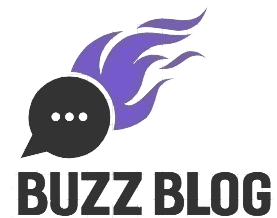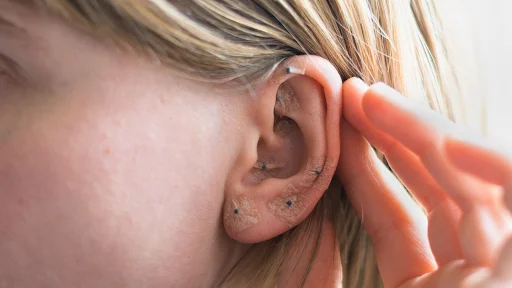Ear seeding is a gentle method that uses small seeds or beads on the outer ear. These points connect to different body parts according to Traditional Chinese Medicine. By pressing the seeds, people aim to improve sleep, reduce stress, and manage pain. It is simple, drug-free, and easy to apply.
Researchers have studied ear seeding in different conditions. Some trials report benefits for anxiety, sleep issues, and mild pain. However, other studies show no stronger effects than sham treatments. Analysts explain that placebo and patient expectations play a strong role. Scholars agree that more large and high-quality studies are needed.
Ear seeding attracts people because it is safe, natural, and affordable. Many feel calm and balanced after using it, even if science debates its power. Curiosity about ancient healing mixes with modern interest in wellness. This makes ear seeding a trend worth exploring with care and an open mind.
How it should work
First. The ear maps the body in auriculotherapy. Second. Stimuli on the ear points send nerve signals to the brain. Third. Those signals may change pain pathways and stress responses. Fourth. Researchers suggest vagus nerve stimulation and endorphin release as possible mechanisms. These ideas link ear touch to physical change.
Types of evidence
First. Small randomized trials exist. Second. Many trials use needles for auricular acupuncture. Third. Other trials use seeds or adhesive pellets. Fourth. Systematic reviews combine these trials to judge the overall effect. Researchers report mixed results. Some trials show benefit. Some show no benefit beyond sham. Study quality varies.
What clinical trials found
First. Trials on anxiety show promise. Several studies report lower anxiety after auriculotherapy. Researchers used control groups in those trials. Results sometimes favor real treatment over sham.
Second. Trials on pain show mixed outcomes. Some studies report reduced pain intensity. Other studies show no clear advantage over control. Study length, patient type, and technique differ across trials. These differences affect results.
Third. Trials on insomnia and sleep disturbance show early positive signals. Evidence remains limited. Trials use short follow-up periods. Trials use small samples. Researchers call for larger studies.
Placebo effect: strong force in play
First. Placebo means a measurable change from belief in treatment. Ear seeding involves tactile contact. Patients expect benefit. Those two factors boost placebo effects. Trials often use sham seeds or sham points. Sham devices can still trigger sensory expectation. Studies show a small additional benefit over sham in some cases. Many trials cannot fully rule out the placebo as the main cause.
Safety and risk
First. Ear seeding uses noninvasive items. Risk stays low for most people. Minor skin irritation appears in some users. Rarely, seeds fall into the ear canal. Professionals advise cleaning the skin before placement. People with skin allergies should avoid adhesive seeds. People with ear infections should not use ear seeds until healed.
Real-world use
First. Practitioners use ear seeds in clinics and spas. Home kits sell widely online. Many people report practical benefit. Reports include better sleep, calm mood, and reduced cravings. Researchers note that self-reported gain may reflect expectation more than physiological change. Clinicians often combine ear seeding with other therapies. Combined care complicates the proof of effect for seeds alone.
Limits in current science
First. Many trials have small samples. Second. Trials vary in point selection and technique. Third. Sham controls differ across studies. Fourth. Blinding sometimes fails. Fifth. Outcome measures show a wide variety. These limits reduce certainty. Major reviews call for larger, well-designed randomized trials.
How to read headlines on ear seeding
First. Look for the study type. Randomized trials give stronger evidence than case reports. Second. Check sample size. Larger samples yield more reliable results. Third. Check for sham control. Sham controls the placebo test. Fourth. Look for independent replication. Repeated results across teams raise confidence. Fifth. Prefer sources with clinical expertise or university affiliation.
Practical takeaways for readers
First. Ear seeding may reduce anxiety in some people. Evidence shows promise for short-term relief. Second. Evidence for pain and sleep shows mixed results. Third. Expectation plays a large role. Fourth. Use ear seeding as a complementary option. Fifth. Consult a licensed acupuncturist for placement advice. Sixth. Stop use if redness or pain appears. Seventh. Keep ear seeding from replacing proven medical care for serious illness.
Sources that add authority
- First. Cleveland Clinic overview of ear seeds. This source offers clear clinical guidance.
Second. Healthline summary on ear seeding and mechanisms. This source reviews current thinking.
Third. BMC systematic review of auricular seed or pellet attachments. This review analyzes many trials.
Fourth. 2022 systematic review on auriculotherapy for anxiety and stress. This review reports positive effects with caveats.
Fifth. JAMA Network randomized trial on auricular acupuncture for depression. This trial adds rigorous clinical data.
Conclusion
Ear seeding sits at the intersection of tradition and modern study. Trials show promise for anxiety and short-term relief. Trials show mixed results for pain and sleep. Strong placebo effects exist. The method causes little harm when practitioners apply it correctly. Use ear seeding as a simple, low-risk option to try alongside proven care. Demand from patients must push researchers toward larger, blinded, and standardized trials. Science must test ear seeding with sharp tools. That test will decide if ear seeding works beyond patient belief. Until that test completes, view ear seeding as a useful aid for some people rather than a proven cure.

